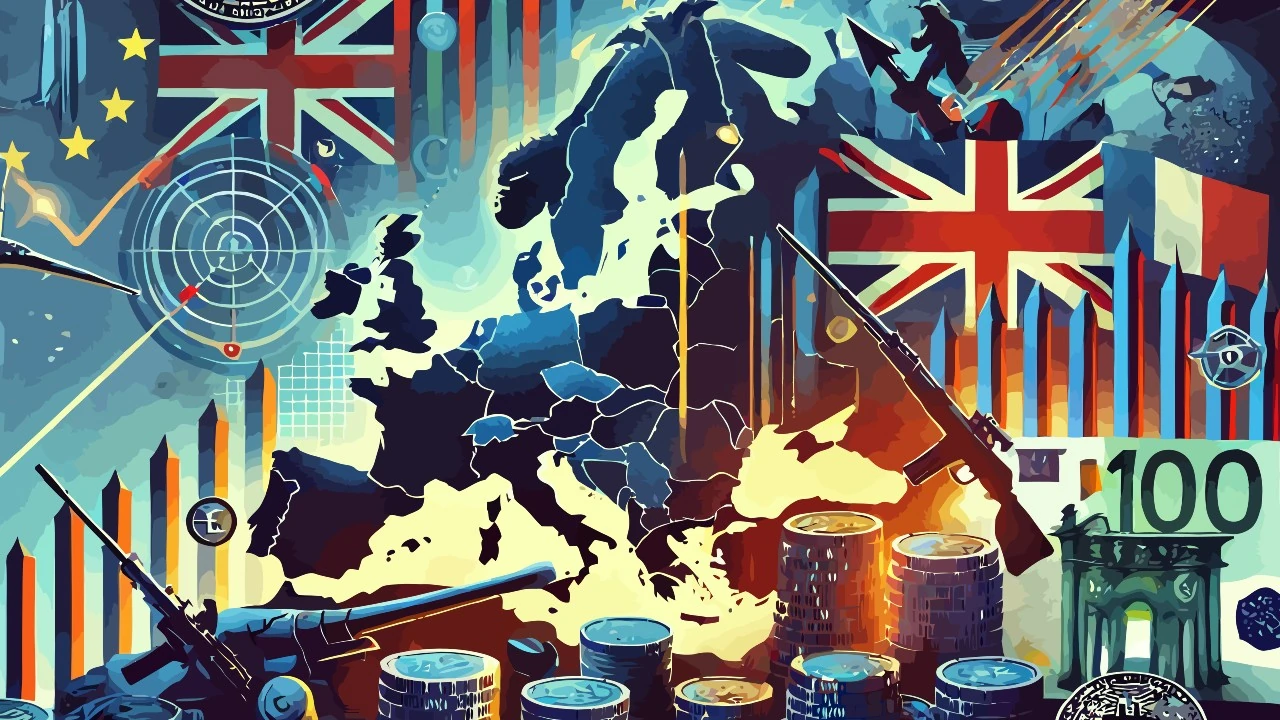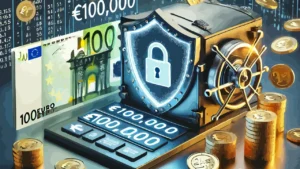In recent months, several high-level European politicians, such as Ursula von der Leyen, Charles Michel and Jens Stoltenberg, have put forward the idea of incentivizing savers to invest spontaneously in European defense. The goal is to create financial instruments that attract private capital, supporting the modernization of the military apparatus without directly burdening state budgets. This article analyzes possible financial solutions without fueling unnecessary alarmism or conspiracy theories.
Contents
#1. The political and financial context
In recent times, Europe has been facing increasing geopolitical pressure that has led many Member States to reassess their military spending. The war in Ukraine, tensions with Russia and the renewed role of NATO have highlighted the inadequacy of the European defence apparatus. In this context, prominent figures such as Ursula von der Leyen, President of the European Commission, and Charles Michel, President of the European Council, have reiterated the importance of strong European rearmament. Josep Borrell, Representative for Foreign Affairs and Security Policy of the European Union, highlighted the need for an autonomous common defence, while Jens Stoltenberg, Secretary General of NATO, underlined the complementarity between European defence and the Atlantic Alliance.
The push to mobilize private savings for rearmament stems from the need to avoid excessive public debt, already strained by recent economic crises and extraordinary investments in sectors such as energy and health. Some politicians therefore propose the introduction of financial instruments dedicated to defense, capable of channeling private savings towards military reinforcement.
However, the idea of involving savers has raised doubts and debates. Some analysts fear that such instruments could prove ineffective or even risky, especially if there are no guarantees of return. Others see the initiative as an opportunity to strengthen European strategic independence without burdening taxpayers. In any case, the question remains open and deserves thoughtful consideration.
#2. Existing instruments: PIR and ISK
To understand how new financial instruments dedicated to defense could be structured, it is useful to analyze already consolidated experiences such as the Italian PIR (Individual Savings Plans) and the Swedish ISK (Individuellt Sparande i Kapitalförsäkring).
- PIRs: were introduced in Italy in 2017 with the aim of incentivizing private investment in national companies. Those who maintain the investment for at least five years benefit from a significant tax exemption. PIR funds provide for a significant share of investments in Italian SMEs, thus supporting domestic economic growth. However, their relatively rigid structure limits geographical and sectoral diversification.
- The Swedish ISK: is a more flexible and modern instrument. It allows investors to keep funds in investment accounts with a preferential and simplified taxation. Unlike PIR, the ISK allows investing in a wide range of financial assets without geographical restrictions , ensuring greater capital mobility.
A key difference between the two instruments concerns taxation: PIRs offer long-term tax exemptions, while ISKs provide constant but reduced taxation. Furthermore, PIRs tend to focus on the domestic market, while ISKs allow for international diversification. These differences could inspire European financial instruments aimed at defense, combining tax advantages with operational flexibility.ziari europei mirati alla difesa, combinando vantaggi fiscali con flessibilità operativa.
#3. Mixed equity-bond funds
A possible solution, which is in the realm of personal hypotheses and conjectures , could be the creation of mixed funds dedicated to European defense. These funds could take the form of combined ETFs, integrating shares of defense companies with supranational or government bonds issued to finance military projects.
The idea behind these funds would be to offer a balanced investment, capable of attracting both conservative investors, interested in bonds, and those more inclined to risk, attracted by the growth potential of defense companies. Semi-active management would guarantee flexibility, allowing the portfolio to adapt to market dynamics without exposing oneself to excessive risks.
These instruments, however, should ensure geographical and sectoral diversification to reduce the concentration of risk on a few entities. Furthermore, it would be necessary to provide adequate insurance coverage to protect investors from any failures or significant losses. One hypothesis could be to create a European management consortium, capable of ensuring transparency and operational reliability.
However, risky funds with guarantees paid by institutions sooner or later mean a burden on public budgets, therefore indirectly but substantially on those who invest in the funds themselves.
#4. The risk of a near-zero return
Even if the strengthening of European defense can generate indirect economic benefits, such as technological development and job creation, the issue of financial sustainability remains. Investments in defense, historically, do not generate direct profits, except in war contexts in which the winner can appropriate the resources of others, a logic that has been abandoned for almost a century in the West.
👉 Read also: The Military Spending: Necessity and Consequences
The perception of a zero return on investment can discourage many savers, especially if the initiative is perceived as a sort of disguised “forced withdrawal”. However, it is important to understand that the need to increase defense spending is a consequence of the lack of previous investments. The perception of a burdensome and sudden investment comes from the lack of long-term planning.
👉 Read also: Conceptual Errors of Forced Withdrawal from the A/C
Thus, while increased spending may seem like a significant economic sacrifice today, it may prove necessary to ensure a defensive capability adequate to contemporary threats. Ultimately, the effectiveness of such instruments will depend on their ability to balance financial returns and political sustainability.
#5. The issue of the single market
The European single market is an ambitious project that aims to ensure the free movement of goods, services, capital and people within the European Union. In recent years, the idea of extending this concept to the defence and capital sectors has sparked heated debates among member countries. On the one hand, supporters such as France and Germany see integration as a way to strengthen Europe’s economic and military competitiveness. On the other hand, countries such as Poland and Hungary express concerns about the loss of national sovereignty and the centralisation of decisions.
- The single capital market: aims to enable seamless cross-border investment, reducing costs and facilitating access to credit. The main benefits include increased liquidity, diversification of risks and the opportunity for companies to access funds from across Europe. However, there are also risks related to possible financial instability, as local crises could quickly spread across the continent.
- The single defence market: This aims to standardise military spending and unify the production and purchase of armaments. Supporters point to the economic benefits of economies of scale, with lower unit costs and greater interoperability between national armies. The idea is to create a more robust and autonomous defence capacity, capable of competing with the world’s superpowers. However, critics warn that such an approach could penalise smaller defence industries and undermine the decision-making freedom of individual states.
Furthermore, there is a fear that the consolidation of military spending under a single European structure could favor the economically stronger countries to the detriment of others, creating internal imbalances and potential political tensions. The centralization of strategic decisions also risks creating a sense of detachment between citizens and military choices made at a supranational level.e un senso di distacco tra i cittadini e le scelte militari fatte a livello sovranazionale.
#6. Final considerations
Ultimately, while the single capital market promises economic opportunities and financial growth, the defence market remains a complex and controversial terrain, requiring a delicate balance between efficiency, national autonomy and strategic cooperation. However, we should not necessarily copy external models at all costs, but perhaps look for the strengths that distinguish us in our own systems. If Europe had been like America, it would have behaved like America a long time ago. I am not entirely convinced that unification at all costs, however beneficial it may be on paper, actually translates into an effective achievement of the objectives set.
As mathematician Ian Malcolm would say in Michael Crichton’s novel Jurassic Park :
Chaos theory states that even small changes in initial conditions can lead to drastically different outcomes. It is unpredictability itself that dominates complex systems.
More generally, complex systems are unpredictable by their very nature. Forcing a rigid structure on a dynamic and changing reality such as the European one could generate unexpected consequences, nullifying the theoretical advantages foreseen and creating more problems than it solves.











Leave a Reply